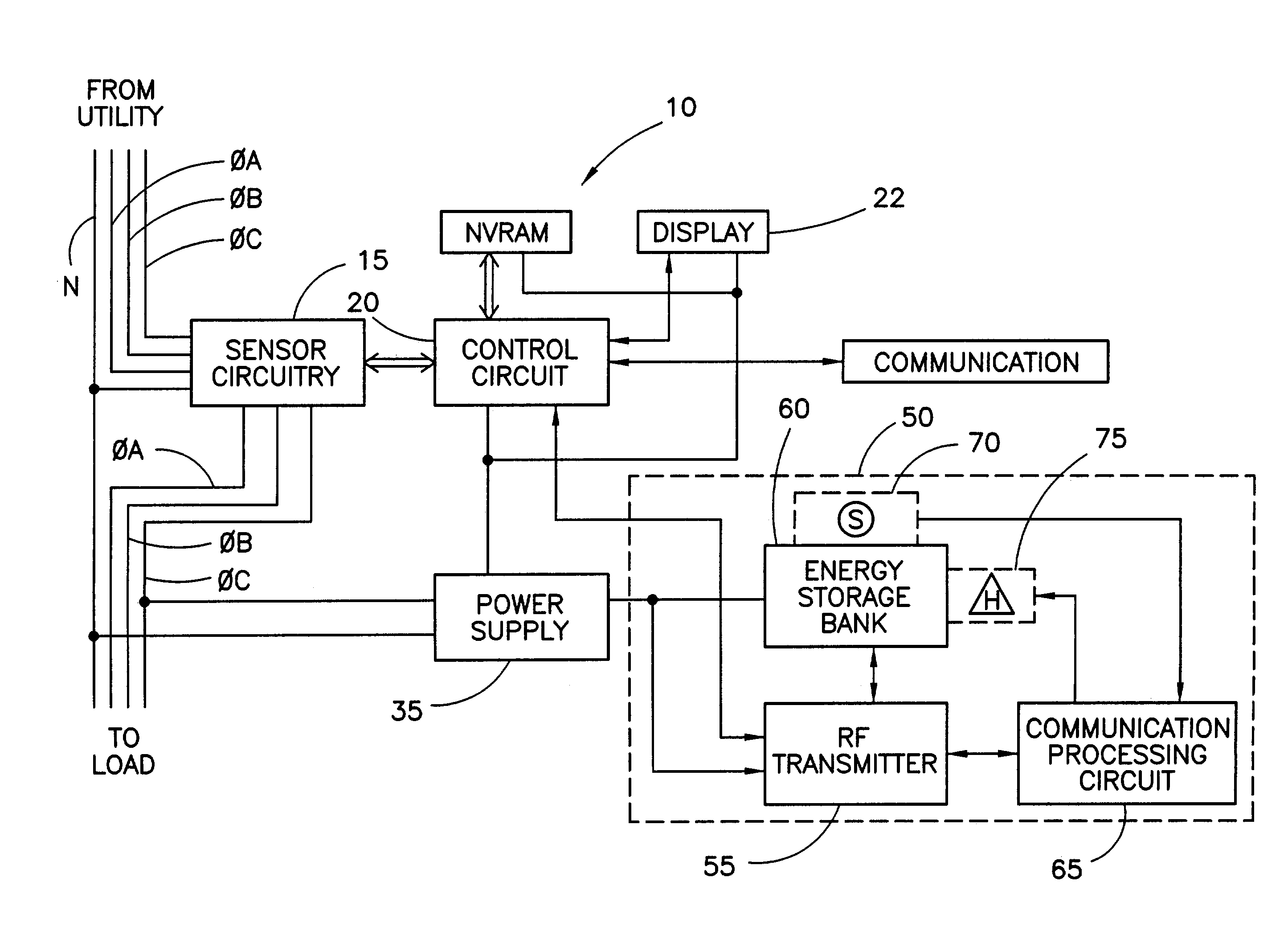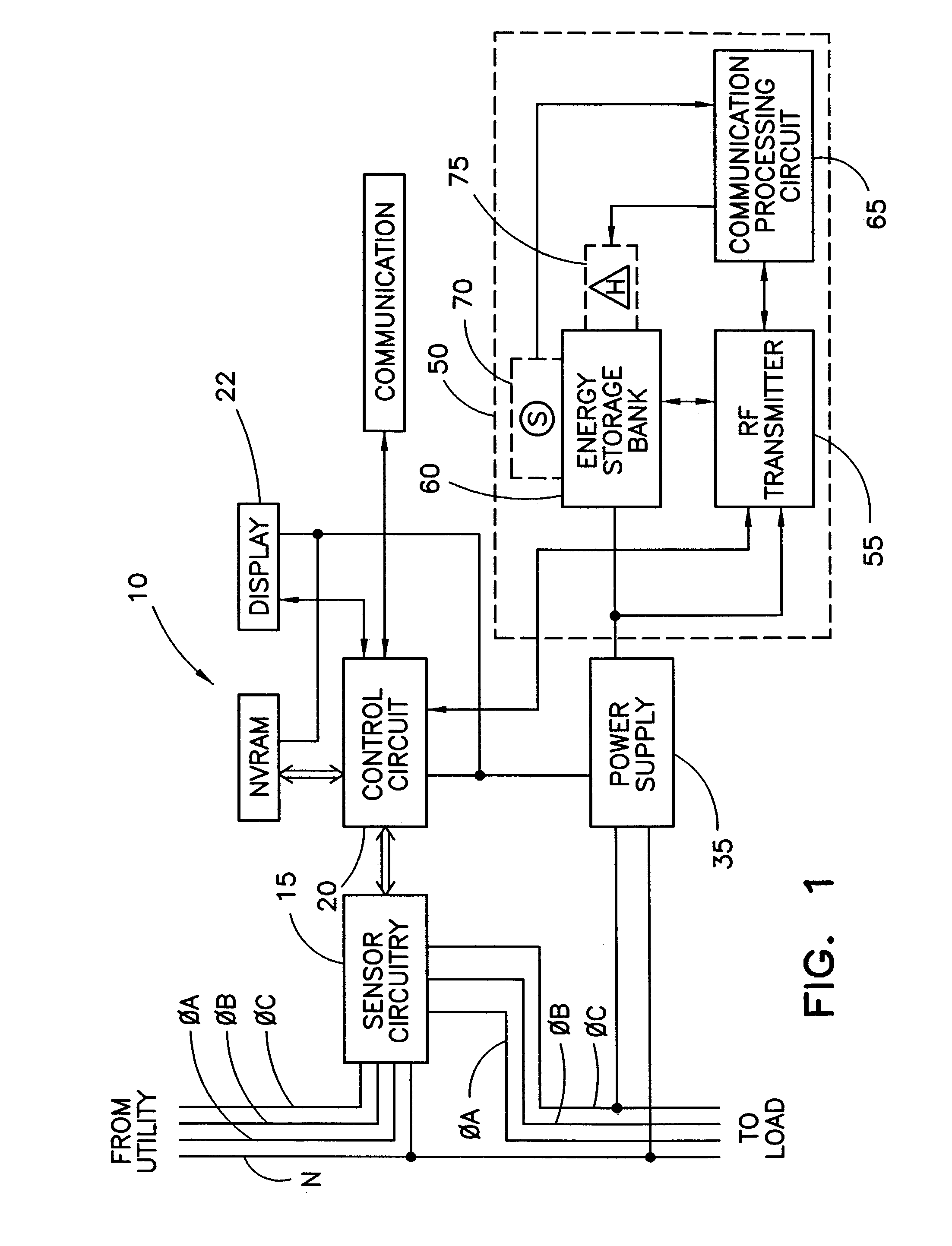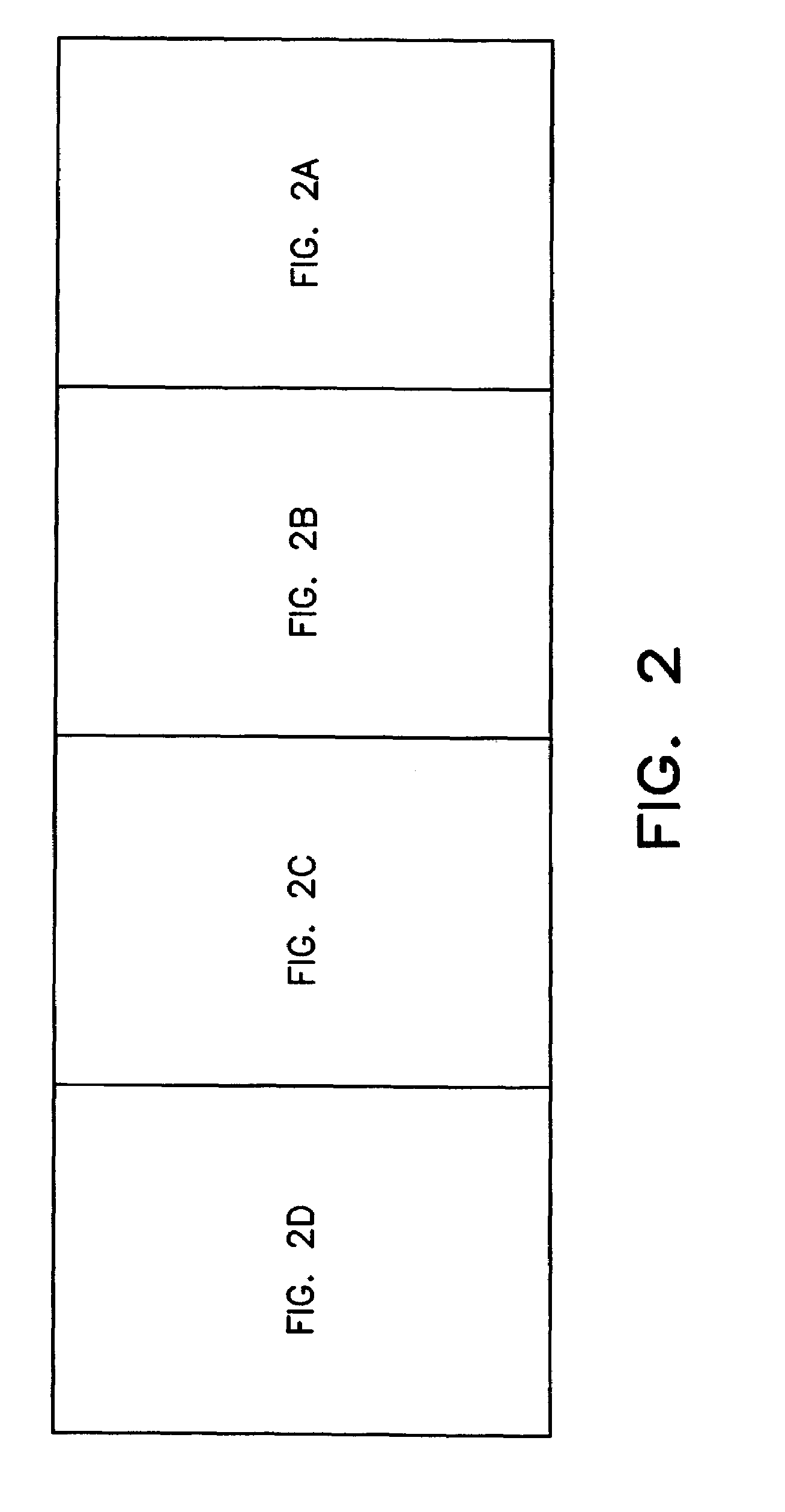Utility meter power arrangements and methods
a technology of power arrangement and utility meters, applied in the field of utility meters, can solve the problems of increased cost, high power requirements of such radios, labor-intensive and expensive methods of meter reading, etc., and achieve the effect of enhancing the operation of energy storage devices
- Summary
- Abstract
- Description
- Claims
- Application Information
AI Technical Summary
Benefits of technology
Problems solved by technology
Method used
Image
Examples
Embodiment Construction
[0019]FIG. 1 shows a block diagram of an electricity meter 10 that incorporates a power arrangement according to the present invention. In general, the meter 10 includes a sensor portion or sensor circuit 15, a primary power supply 35, a measurement portion or measurement circuit 20, a control circuit 30, a communication circuit 45, a radio frequency communication (“RF”) module 50.
[0020]The sensor circuit 15 is operably coupled to a plurality of utility power lines including a phase A power line φA, a phase B power line φB, a phase C power line φC, and a neutral line N. The plurality of utility power lines φA, φB, φC, and N connect to an electrical utility, not shown, and provide power from the utility to a load, not shown. The power or energy consumed by the load is metered by the meter 10. The load may suitably be the electrical system of a residential facility, industrial facility, commercial facility, or the like. It is noted that the exemplary embodiment described herein is ins...
PUM
 Login to View More
Login to View More Abstract
Description
Claims
Application Information
 Login to View More
Login to View More - R&D
- Intellectual Property
- Life Sciences
- Materials
- Tech Scout
- Unparalleled Data Quality
- Higher Quality Content
- 60% Fewer Hallucinations
Browse by: Latest US Patents, China's latest patents, Technical Efficacy Thesaurus, Application Domain, Technology Topic, Popular Technical Reports.
© 2025 PatSnap. All rights reserved.Legal|Privacy policy|Modern Slavery Act Transparency Statement|Sitemap|About US| Contact US: help@patsnap.com



